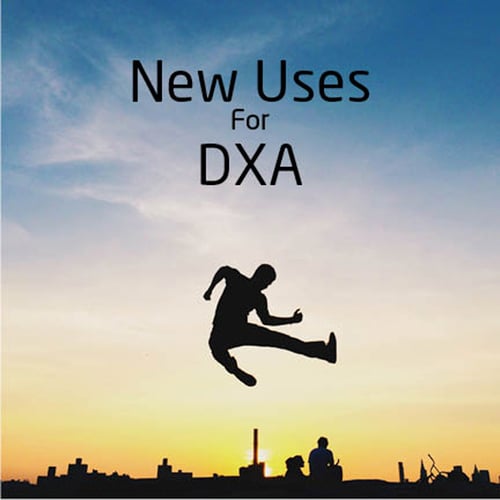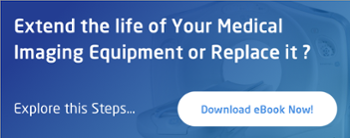For many people who are concerned with developing a better physique, recognizing the difference between weight loss and muscle loss, or weight gain and muscle gain can be a complete guessing game. Even when you start seeing the results in the mirror, watching the numbers on the scale fluctuate from day-to-day or week-to-week can be maddening. Even calculating Body-mass index (BMI) doesn’t seem to give most people any real insight into the true composition of their body. Sometimes it feels like discovering what’s  actually going on is near impossible.
actually going on is near impossible.
There is a solution though. In many clinics, hospitals and even in some health spas, doctors are using DXA scans to measure and get a highly detailed analysis of body composition. Commonly called a whole-body scan, Dual-Energy X-Ray Absorptiometry provides a much more complete picture of body composition. The DXA scan (also written or referred to as DEXA) has typically been used to measure bone density but it can also detect exactly how your body’s mass is distributed between bones, fat and lean muscle tissue.
Traditional Uses for DXA
The high precision and accuracy of DXA along with low radiation dosage and low cost per scan has made the DXA scanner the method of choice for longitudinal monitoring of bone mineral density in clinical practice and for pharmaceutical trials since as early as the 1960s. Originally called DEXA, the system has played an instrumental role in diagnosing and tracking patients with osteoporosis, a condition that involves a gradual loss of calcium resulting in a structural change that causes bones to become thinner and more fragile. DXA scanning also allows for a fast and proportionally less expensive way to monitor bones during recovery from infection, fracture or tumor. Today, doctors are finding DXA helpful with treating conditions like rickets, Lupus and Turner Syndrome in pediatric patients because of the short scan time. It seems as if doctors are finding more innovative ways to use this unique machine.
How DXA Works
As it’s full name suggests Dual-Energy X-Ray Absorptiometry uses X-rays to assess bone mineral density and body composition. Patients lay still on an open scanning bed for typically less than 10 minutes. During that time a scanning arm passes over them sending low-energy X-rays from two different sources through their bone and tissue. The x-rays produce less radiation that a TSA body scanner but because each type of matter blocks X-rays differently, the system can detect both density and composition. And while the images produced look very much like a standard X-ray, the software inside the machine is able to extrapolate a wealth of data that can help assess bone density, bone strength and risk of fracture as well as the overall composition of the human body.
DXA as a Tool for Guiding Weight Loss
Currently DXA machines are regularly being used to help people take the guesswork out of the body transformation that results from diet or exercise. Patients are often more accepting of a DXA scan because it is less invasive and often less costly than other popular methods like hydrostatic weighing, the Bod Pod or calipers that rely on calculated measure of body fat. Additionally, DXA scans deliver highly precise results compared to these other methods. Much of the error factor or awkward human interaction can be eliminated from the process providing a more comfortable experience for body conscious individuals. In today’s massive health and fitness marketplace, DXA scans are becoming more common in weight loss clinics, training facilities, and high-end spas.
Evolution of DXA
 What originally began as the DEXA scanner for the measurement of bone densitometry has continued to evolve in new and exciting ways. Largely overlooked when it was invented almost 50 years ago the capabilities of DXA instrument have expanded as doctors and clinicians discover new uses for the technology. Beyond hospitals, patient care and clinical trials, the market for DXA measurements will continue to grow.
What originally began as the DEXA scanner for the measurement of bone densitometry has continued to evolve in new and exciting ways. Largely overlooked when it was invented almost 50 years ago the capabilities of DXA instrument have expanded as doctors and clinicians discover new uses for the technology. Beyond hospitals, patient care and clinical trials, the market for DXA measurements will continue to grow.
As DXA capabilities expand, so do the responsibility of clinicians to develop and implement valid quality control procedures to ensure meaningful results for those looking to improve their lives.
This dedication to quality control fuels everything we do at Atlantis Worldwide. We are committed to providing the best equipment and service in medical imaging. From MRI and C-Arms, to CT-Scanners, X-Ray, DXA and PET/CT/Nuclear Machines – we are proud to provide best in class equipment and service to hospitals, clinics, health and wellness facilities and doctors around the world.
With such an important role in the world of health and medicine we urge you to make sure you’re getting the best in medical imaging. If you have questions about DXA or any medical imaging equipment don’t hesitate to Contact Us Today!
Some blogs you may have missed:
- 3D Printing in Medical Imaging & Healthcare
- 3D Tomosynthesis, Breast MRI or Digital Mammography?
- Going Green with Refurbished & Used Medical Imaging Equipment
- 13 Ways to Decontaminate Medical Imaging Equipment & Protect Staff
- Women Health Resources
Meet the author: Vikki Harmonay



